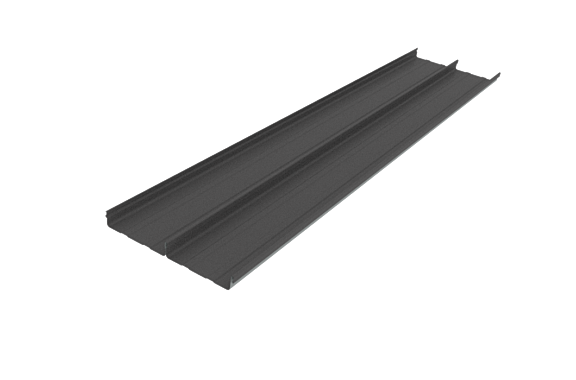



Solar-Rib®
For Designer, Metallic and Gloss colours, download the ColorCote® special colours brochure.

1095mm sheet
Light Commercial
Commercial
Christchurch
Solar-Rib® Performance
Solar-Rib ® is an attractive, linear roofing profile that is expressive in its design. Suitable for Residential, Light Commercial and Commercial applications.


All dimensions given are nominal
Sheet Tolerances
Sheet width: ±5mm
Sheet width for aluminium +0, -15mm. If sheet cover widths are critical, advise Dimond Roofing at time of order.
Sheet length: +10, - 0mm. For horizontal wall cladding where notified at time of order of intended use, tighter tolerances can be achieved +3, -0.
(1) Recommended maximum purlin spacing’s at minimum radius.
(2) Based on 1.1kN point load support, but not intended for roof access.
n/a not available
Roll-forming facilities at: Auckland and Christchurch
Sheet lengths: Solar-Rib® is custom run to order.
Where long sheets are used, consideration must be given to:
- Special transportation licences for sheet lengths over 25m
- Site access for special lifting equipment
- Fixing techniques to accommodate thermal expansion
OIL CANNING: Oil Canning is the visible waviness in the flat areas of metal roofing and walling. Oil canning produces an aesthetic effect inherent in standing seam tray profiles and profiles/flashings with wide flat elements. It does not cause detriment to product performance.
Oil canning can occur during the forming and installation processes and during thermal expansion of the roof sheeting during its life cycle. The effect can be more or less pronounced depending on differing light and sun angle conditions and the coating gloss levels.
For Solar-Rib, oil canning can be reduced by the use of vented roof underlay (e.g. Tyvek Metal) and/or the use of backer rods under the tray. There are several options to reduce the oil canning effect in tray type profiles and flashings, for example, a) increasing the thickness of the material, b) using stiffening swages in wide flat elements and c) limiting flat elements to less than 150mm width. For further information, please refer to the New Zealand Metal Roof and Wall Cladding Code of Practice, Section 12.3.
Relevant Product CAD Details
Below you will find all of the relevant product CAD technical details in .dwg, .pdf & .rvt format.
If you have any questions regarding the details below please contact one of our technical team on 0800 ROOFSPEC.
Below you can download our homeowner’s brochure which includes some of our profiles and basic product information for homeowners when re-roofing or building new.



































































